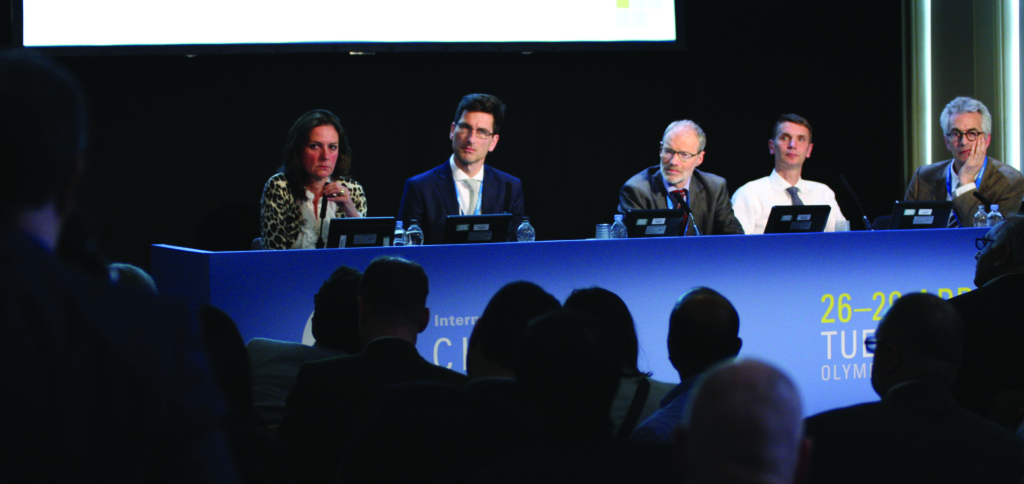
Yesterday’s Vascular Malformations course began with a talk by Andreas Saleh (Munich, Germany) on four basic principles for diagnostic imaging. According to his first principle, clinicians should make sure to take a thorough patient history, and perform clinical examinations and colour-coded duplex sonography. Saleh then advised that clinicians should aim to distinguish between high- and low-flow vascular malformations.
Saleh’s third recommendation was to remember that lymphatic malformations can have a varying signal on longitudinal relaxation time (T1)-weighted MR images. “Of course, you can distinguish
[lymphatic malformation] by clinical examination by colour-coded duplex sonography, but, based on MR imaging, you can distinguish it by contrast enhancement,” he said. His fourth principle was concerned with the diagnosis of microcystic and macrocystic lymphatic malformation. This is important from a treatment point of view, “because macrocystic lymphatic malformation you can treat percutaneously…microcystic lymphatic malformations are very much more difficult to treat.”ategorising lymphatic and venous malformations as “low flow”, and arteriovenous malformations and fistulas as “high flow”, his second principle stated that clinicians can recognise low flow malformations by the appearance of a high signal on transverse relaxation time (T2)-weighted magnetic resonance (MR) images. A low signal indicates high flow malformation. Saleh went on to explain how lymphatic and venous malformations, as well as vascular and solid tumours, can be diagnosed. “In a scientific session, it is not difficult to distinguish between a tumour and a vascular malformation. But, in real life, it may be challenging,” Saleh warned.
Concentrating on venous malformations, Walter Wohlgemuth (Regensburg, Germany) went on to discuss classification and therapeutic implications, in advance of an interactive case presentation from Matthias Widmer (Bern, Switzerland). “It is very easy to distinguish high flow and low flow,” Wohlgemuth commented in reference to MR images. “If you are asking yourself if it is a high-flow or low-flow lesion, then it is low-flow, because a high-flow lesion is very easy to see.” Stating that there is no well-established classification of venous malformations—including phlebographic classification—he said that, “The most important part…is the communications of the venous malformation to the deep venous system.” Describing his preferred technique in detail, Wohlgemuth recommended treatment by direct puncture sclerotherapy, with no need for invasive arterial angiogram. Following the presentation, Widmer took attendees through a practical example of a case of venous malformation, encouraging the audience to participate in working out optimal approaches to treatment.
A highlight of the course was a lesson in how to handle localised intravascular coagulopathy in venous malformations, from chairperson Iris Baumgartner (Bern, Switzerland). Taking attendees through a detailed management algorithm for the diagnosis and treatment of coagulation disorders in venous malformation, she highlighted the importance of understanding this area, stating, “[Patients] often have…local activation of the thrombotic system. That can cause pain—because of local thrombus—thrombosis itself, or it can create bleeding,” she told attendees. Treatment by low-molecular-weight heparin should be guided by presence of recurrent pain, whether patients are due to undergo invasive treatment, and in cases of deep vein thrombosis. Baumgartner advised that novel anticoagulants were potential alternative treatments.
The session went on to cover Klippel-Trenauney syndrome, arteriovenous malformations and treatment of congenital vascular malformations in children. Each presentation was followed by an interactive case, allowing delegates to discuss and debate optimal treatment practices, evaluating and implementing the course content in each hypothetical scenario.







